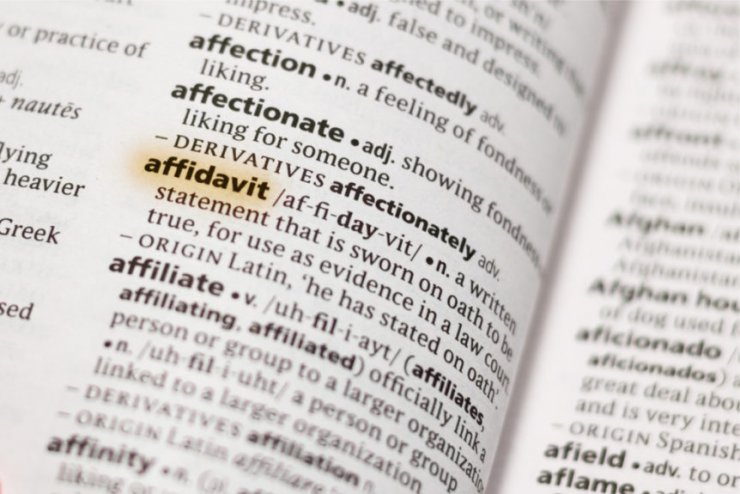
Occasionally a customer or other external party is witness to employee misconduct. It may be necessary for such person to give evidence in disciplinary proceedings. If the employee challenges the outcome of the hearing, such evidence may also be needed in arbitration proceedings. But what if the person does not want to get involved? Is hearsay evidence allowed?
It is understandable that an employer does not want to inconvenience a customer or other person who is able to assist in proving that an employee was guilty of misconduct. Would it be in order to hold a hearing without such person being present to give direct evidence? Can one rely on a written statement or other indirect evidence in a disciplinary hearing? The apparent obstacle is that it would amount to hearsay evidence. Hearsay evidence can be defined as ‘evidence of a statement made by a person not called as a witness, which is tendered for the purpose of proving the truth of what is contained in the statement’. The statement can be a written or verbal account of the person who is not present.
Disciplinary hearings
The Code of Good Practice: Dismissal as set out in Schedule 8 of the Labour Relations Act (“the Code of Good Practice”) sets the following procedural requirements for disciplinary hearings: “Normally, the employer should conduct an investigation to determine whether there are grounds for dismissal. This does not need to be a formal enquiry. The employer should notify the employee of the allegations using a form and language that the employee can reasonably understand. The employee should be allowed the opportunity to state a case in response to the allegations.” This does not appear to exclude reliance on hearsay evidence, as long as the employee has an opportunity to state his or her case. It has indeed been found that employers may rely on written statements in disciplinary hearings – see https://www.labourwise.co.za/labour-articles/written-statements. However, whichever way the evidence is dealt with procedurally, guilt must still be proven on a balance of probabilities.
Arbitration proceedings
In the matter of Taku v Thabo Sekhanisa NO & others (2019) the Labour Court (LC) considered the admissibility of hearsay evidence in arbitration proceedings. Mrs Hughes, a passenger on an SAA flight to Lagos, alleged that a check-in counter employee tried to solicit a bribe from her. She was not willing to confront the wrongdoer or to engage with any other employees on the matter at the time, as she feared that she might be victimised. She was advised to submit her complaint to the customer care department. She did so via e-mail. SAA instituted disciplinary proceedings against the employee. SAA booked a flight and accommodation for two days for Mrs Hughes to testify at the disciplinary hearing. The employee was found guilty and dismissed.
The employee disputed the fairness of his dismissal and referred the matter to the CCMA. Several employees of SAA testified at the CCMA, but Mrs Hughes was not present on this occasion. Mrs Hughes’ e-mail was presented and two SAA witnesses testified to what Mrs Hughes had told them. However, there was no first-hand evidence of what had transpired between Mrs Hughes and the employee at the check-in counter. The CCMA arbitrator accepted that the evidence of the SAA witnesses amounted to hearsay evidence, but nevertheless found that the employee’s version to be highly improbable and the SAA’s version to be probable, coherent and unambiguous. According to the arbitrator dismissal was an appropriate sanction. The employee took the matter on review to the Labour Court.
Law of evidence
On review the Labour Court (LC) referred to the Law of Evidence Amendment Act of 1988, which says that hearsay evidence shall not be admitted as evidence unless the parties agreed to the admission thereof as evidence, or the person on whose credibility the probative value of such evidence depends, testifies at the proceedings, or where the evidence is admitted in the interests of justice, having regard to seven specified factors.
The LC held that none of the above requirements had been met. The arbitrator should not have allowed the hearsay evidence. There was accordingly no evidence before the CCMA arbitrator to support SAA’s case. The CCMA award was reviewed and set aside and remitted to the CCMA for a new hearing before another commissioner.
New hearing
Fortunately for SAA it is not the end of the road. They would have an opportunity to call Mrs Hughes to give direct evidence in an entirely new arbitration hearing. Modern technology allows for other ways to adduce evidence without a witness having to be physically present. The LC judge also hinted at another possibility, i.e. an agreement that the transcript of the disciplinary proceedings be submitted and accepted as if it were evidence that was adduced before the arbitrator.
Lessons
While it may not be regarded as procedurally unfair to admit hearsay evidence in disciplinary proceedings, the standard with regard to the admissibility of hearsay evidence in arbitration proceedings is much higher. Either way, guilt still has to be proven on a balance of probabilities. When employers are reliant on the evidence of customers or other external witnesses, they must bear in mind that the evidence of the external party may be needed on more than one occasion and plan accordingly.
Jan Truter for www.labourwise.co.za


